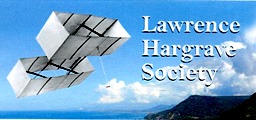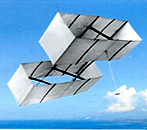CURVED WINGS, ‘SOARING MACHINE’ EXPERIMENTS
Hargrave realized that aspiration, the ability to rise into the air, was connected to wing curvature. So he used the winds at Stanwell Park to test the aspiration qualities of curved wing surfaces. He developed his ‘soaring machines’ during the last 2 years at Stanwell Park, 1897-99.

Left: Hargrave’s sketch of the apparatus used to test his ‘soaring machines’ on the beach during 1898, suspended between giant posts to avoid damage
.The machine was tied to the rope slung between two poles 24 ft high and 48 ft apart, guyed to the surrounding beach. It had the freedom to fly about the rope without dashing itself on the ground.


Left: Hargrave’s most successful soaring machine of 1898 crafted from a single piece of redwood;
Right: another promising wing design of 1898.
Hargrave's work, like that of many another pioneers was not sufficiently appreciated during his lifetime. Most of his models ended up in a German museum in Munich, due to protracted negotiations over safe housing of them in Sydney. Unfortunately many were destroyed by Allied bombing during WWII, the rest repatriated back to Australia later.

